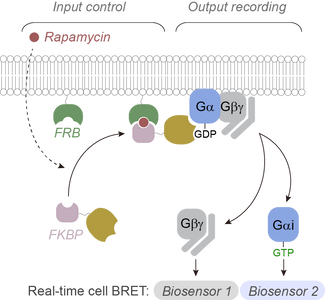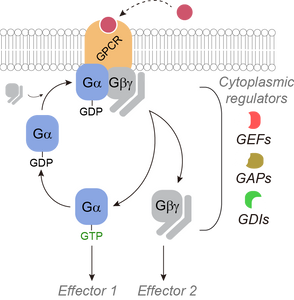The Garcia-Marcos laboratory has discovered that heterotrimeric G-proteins, which are critical molecular switches in cellular communication processes, can trigger different responses in cells depending on the type of protein that activates them.
Heterotrimeric G-proteins are typically activated by G-protein-coupled receptors (GPCRs), which are the target for over one-third of drugs approved for use in the clinic. But G-proteins can also be activated by other proteins that are not GPCRs, a mechanism with important implications for human physiology and disease. The Garcia-Marcos laboratory has used an innovative approach to dissect and compare the consequences of G-protein stimulation by different activators, including GPCRs and various non-GPCR proteins. The approach leveraged a recently developed type of biosensors capable of detecting different forms of active G-proteins in living cells in real time. These were combined with engineered G-protein activator constructs that could be turned on at will with an exogenous synthetic chemical.
The main conclusion is that, contrary to previous beliefs, GPCR and non-GPCR activators elicit different forms of G-protein activation in cells. These findings have important implications in our understanding of pharmacologically actionable signaling hubs in cells, which could be leveraged to envision and design new therapeutic agents.
You can read the article here:
Garcia-Marcos M. Complementary biosensors reveal different G-protein signaling modes triggered by GPCRs and non-receptor activators. Elife. 2021 Mar 31;10:e65620. PMID: 33787494 https://pubmed.ncbi.nlm.nih.gov/33787494/

